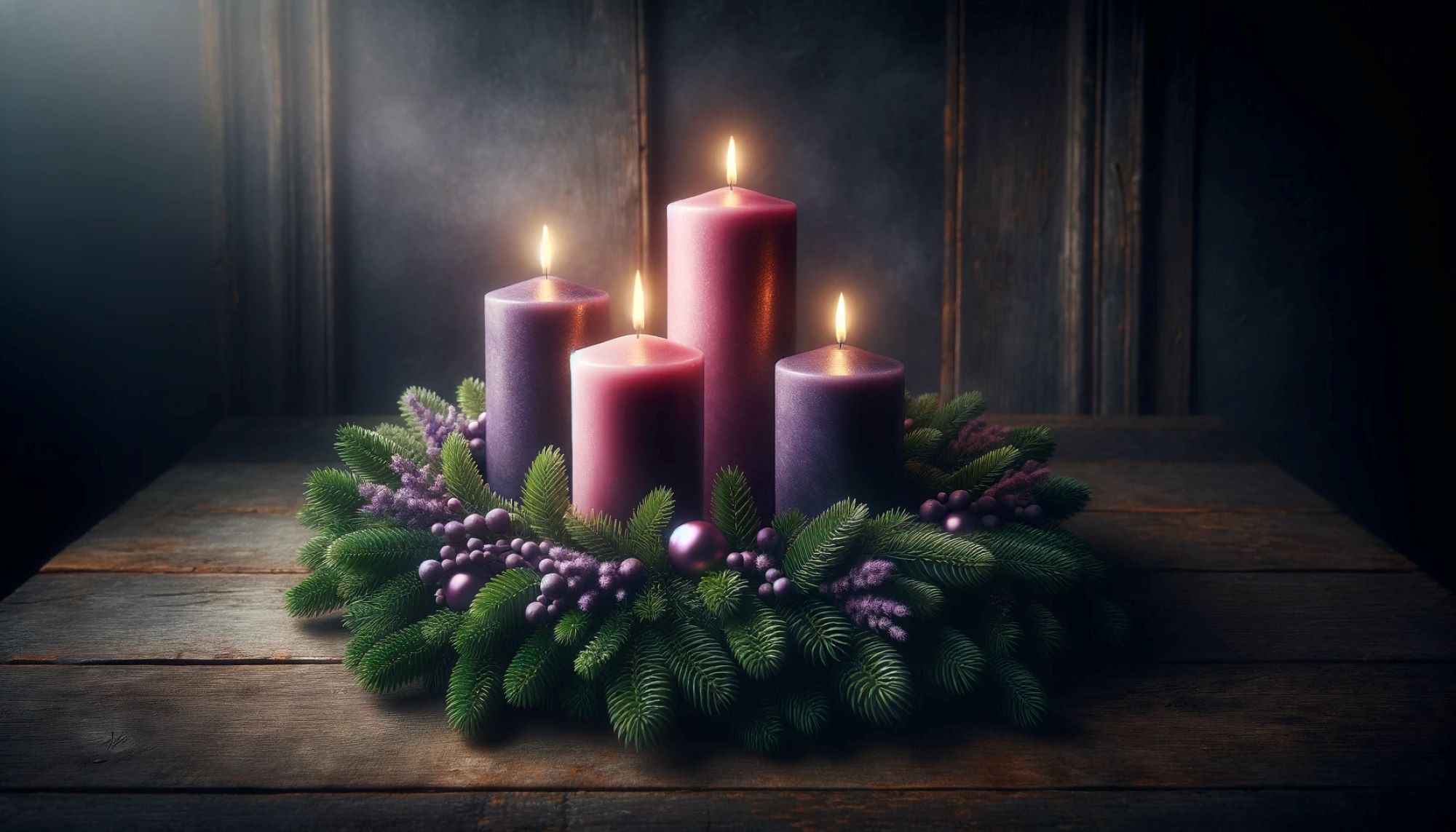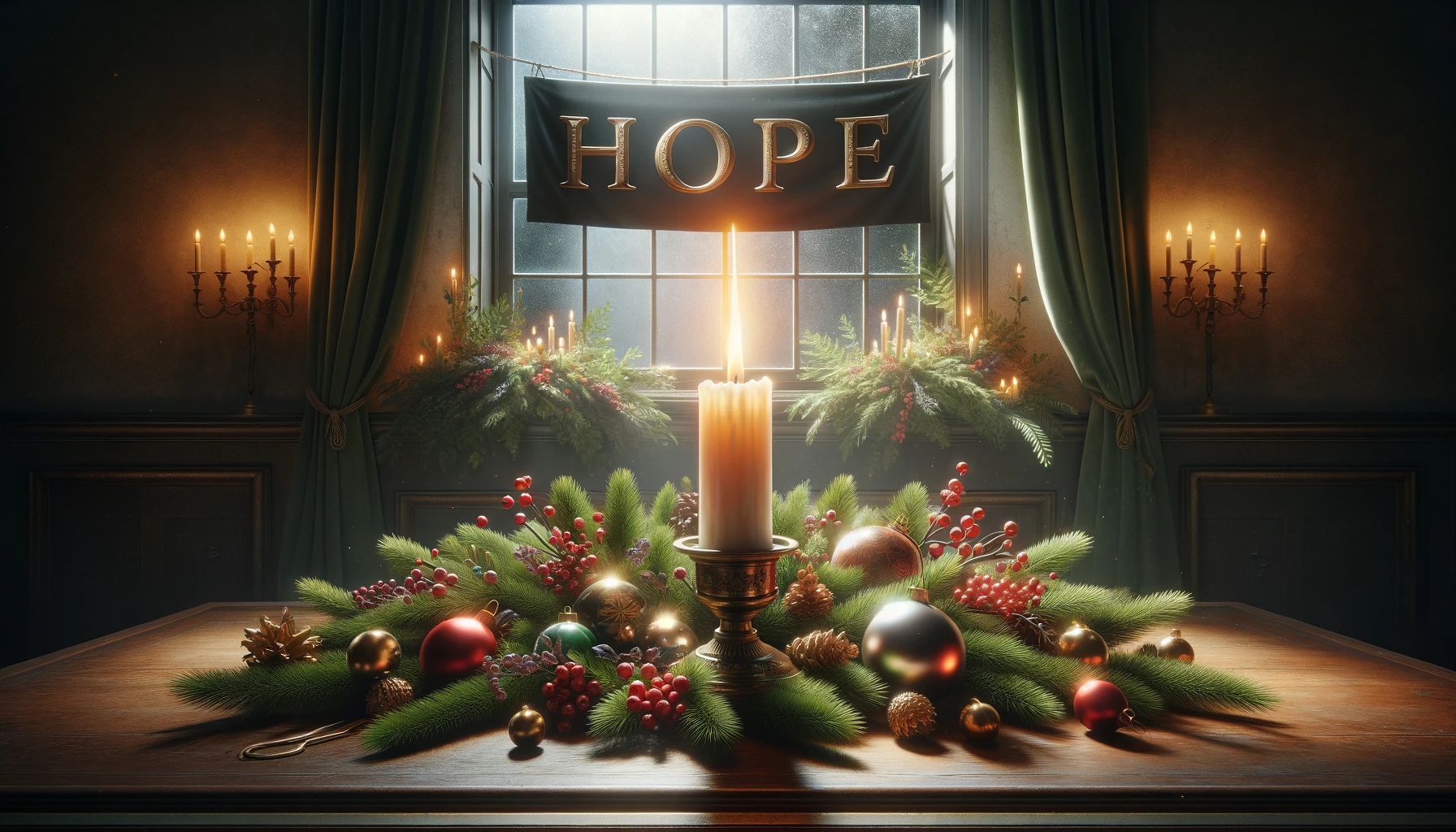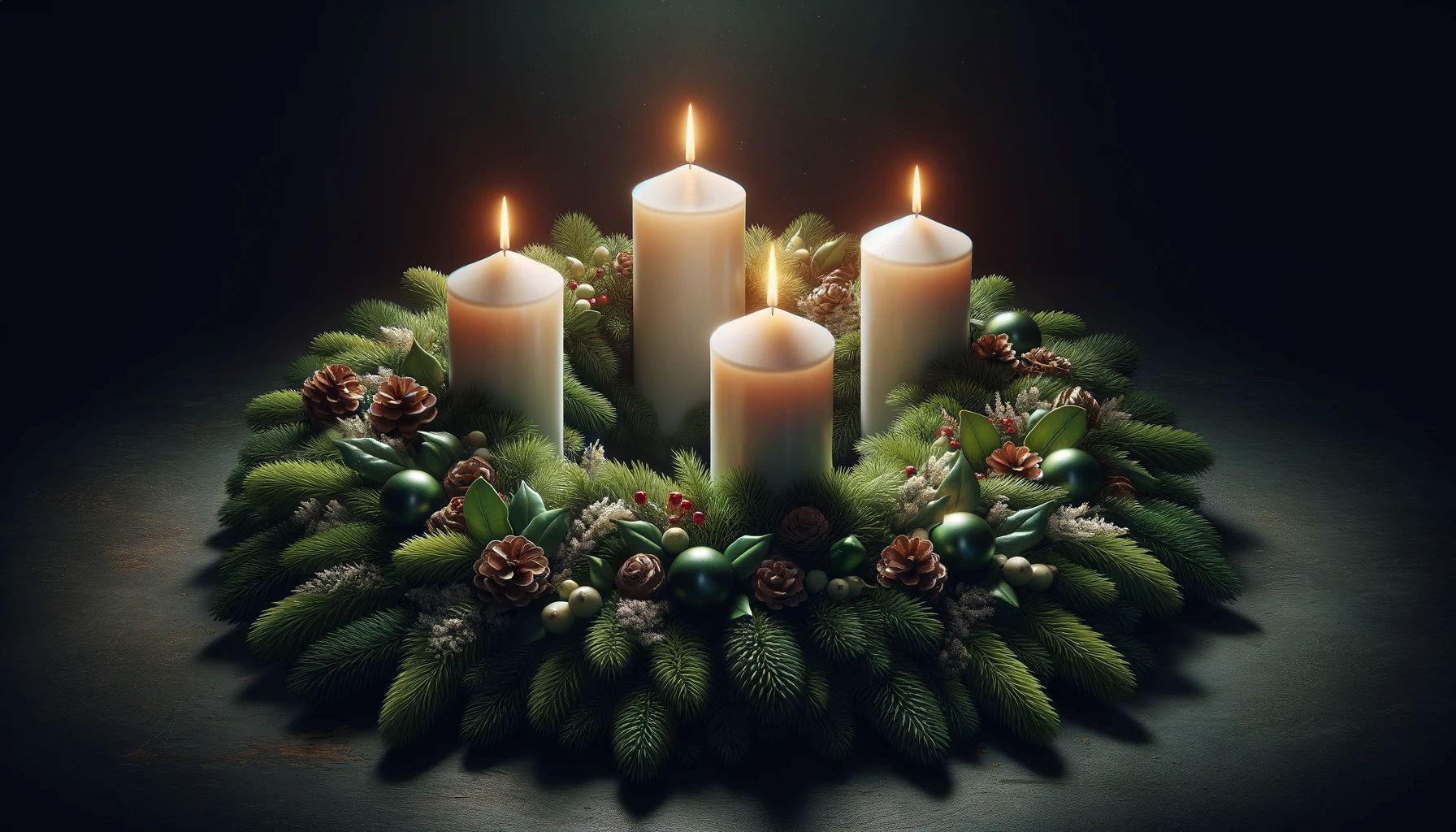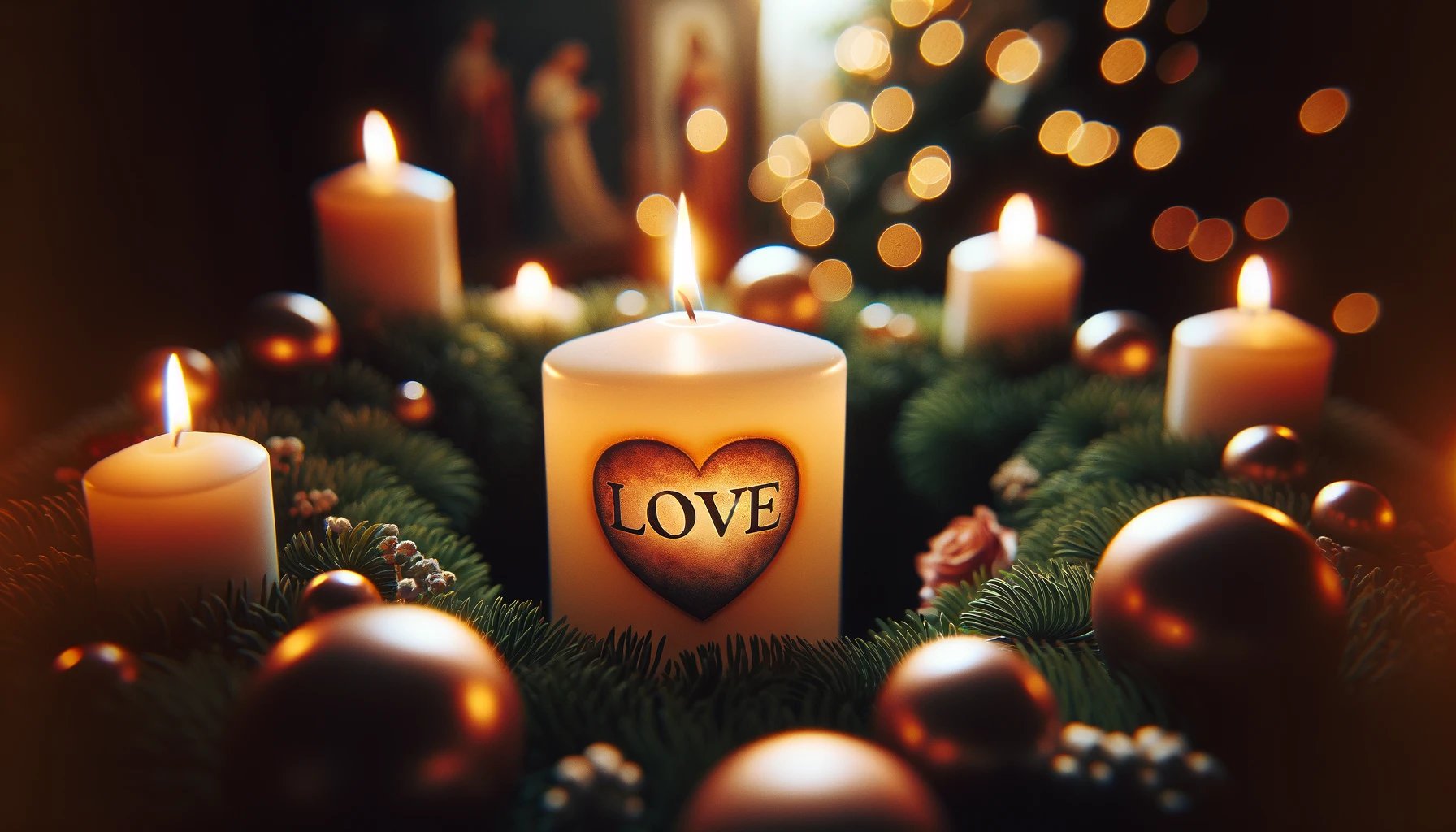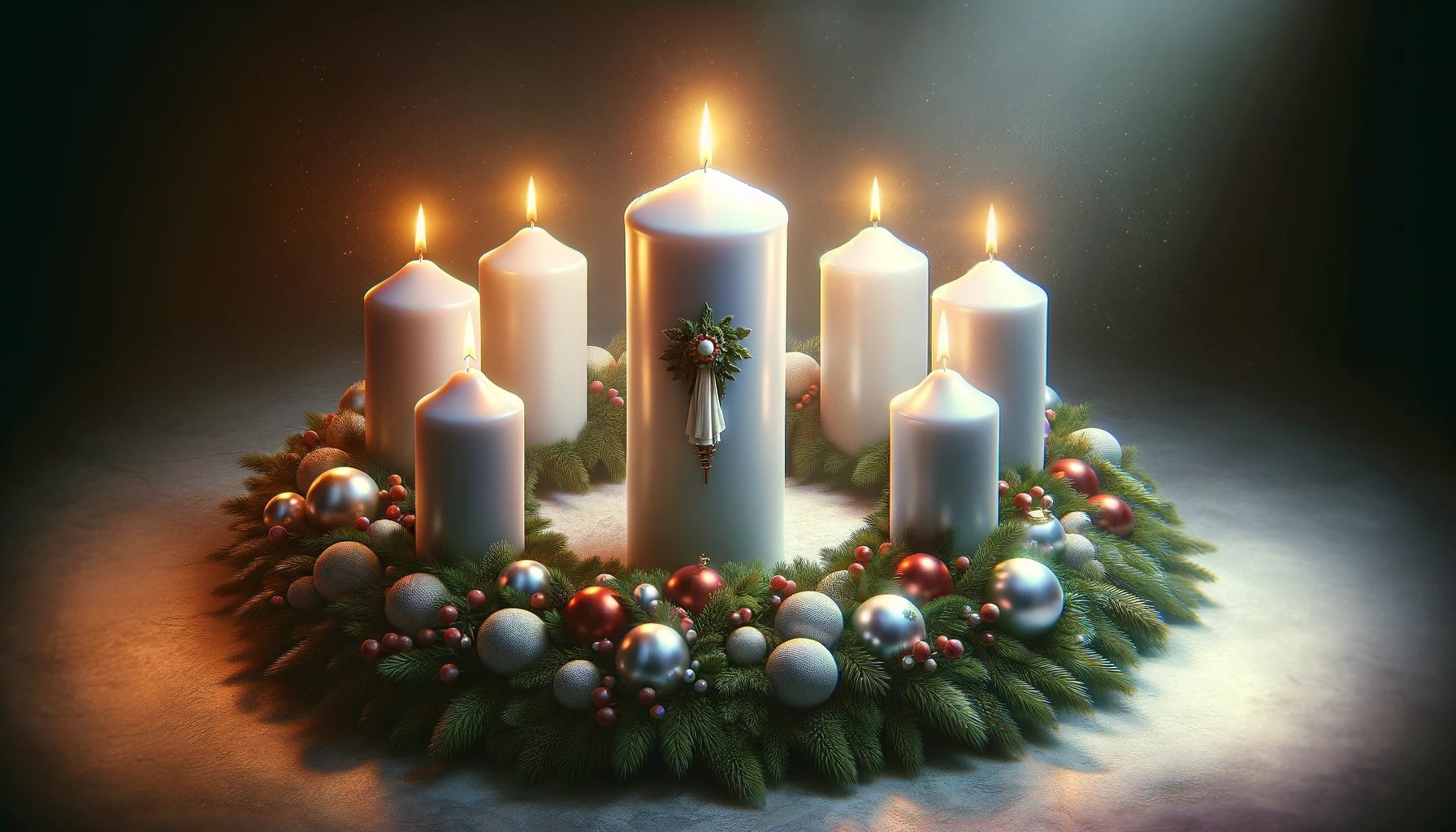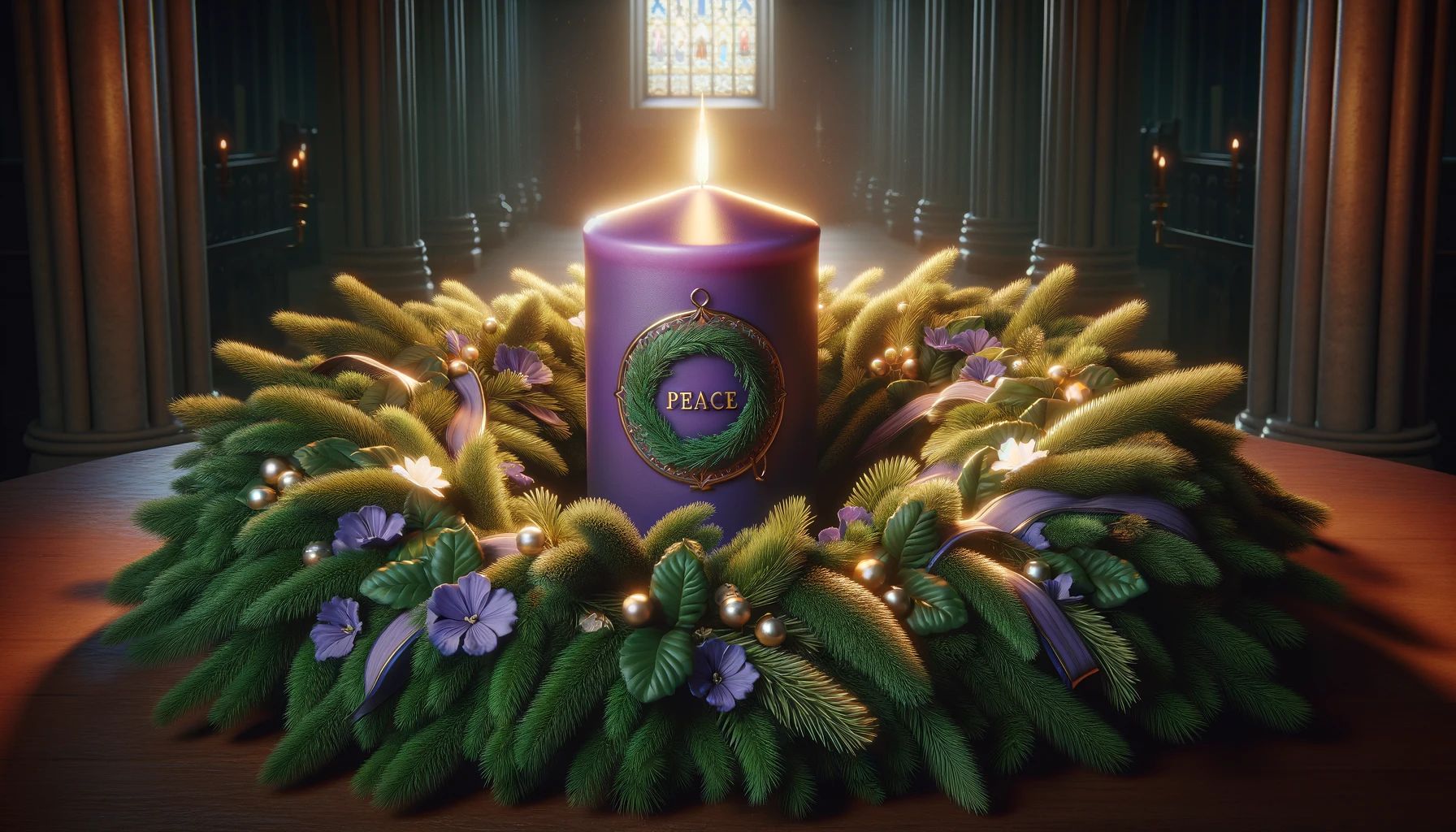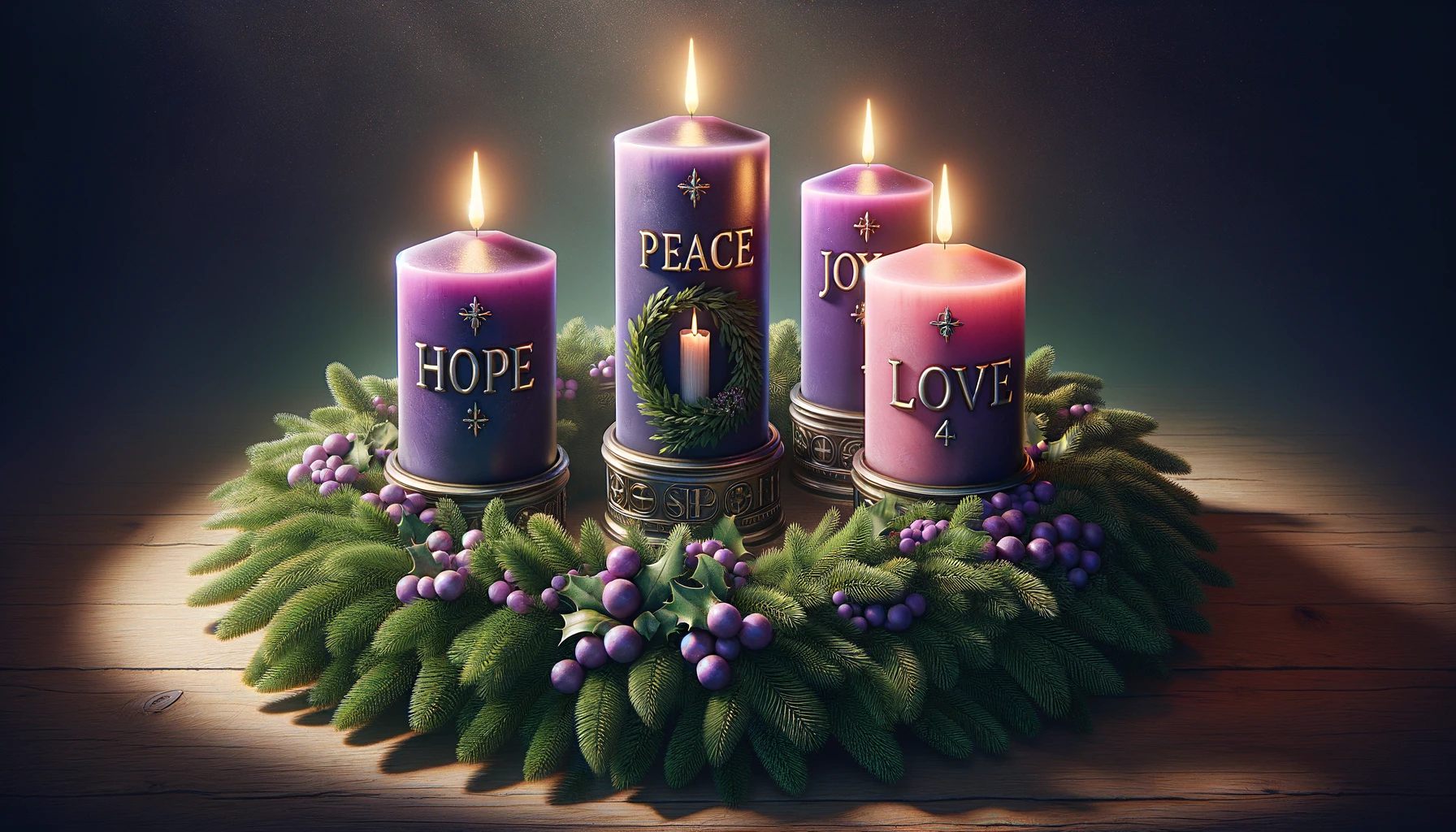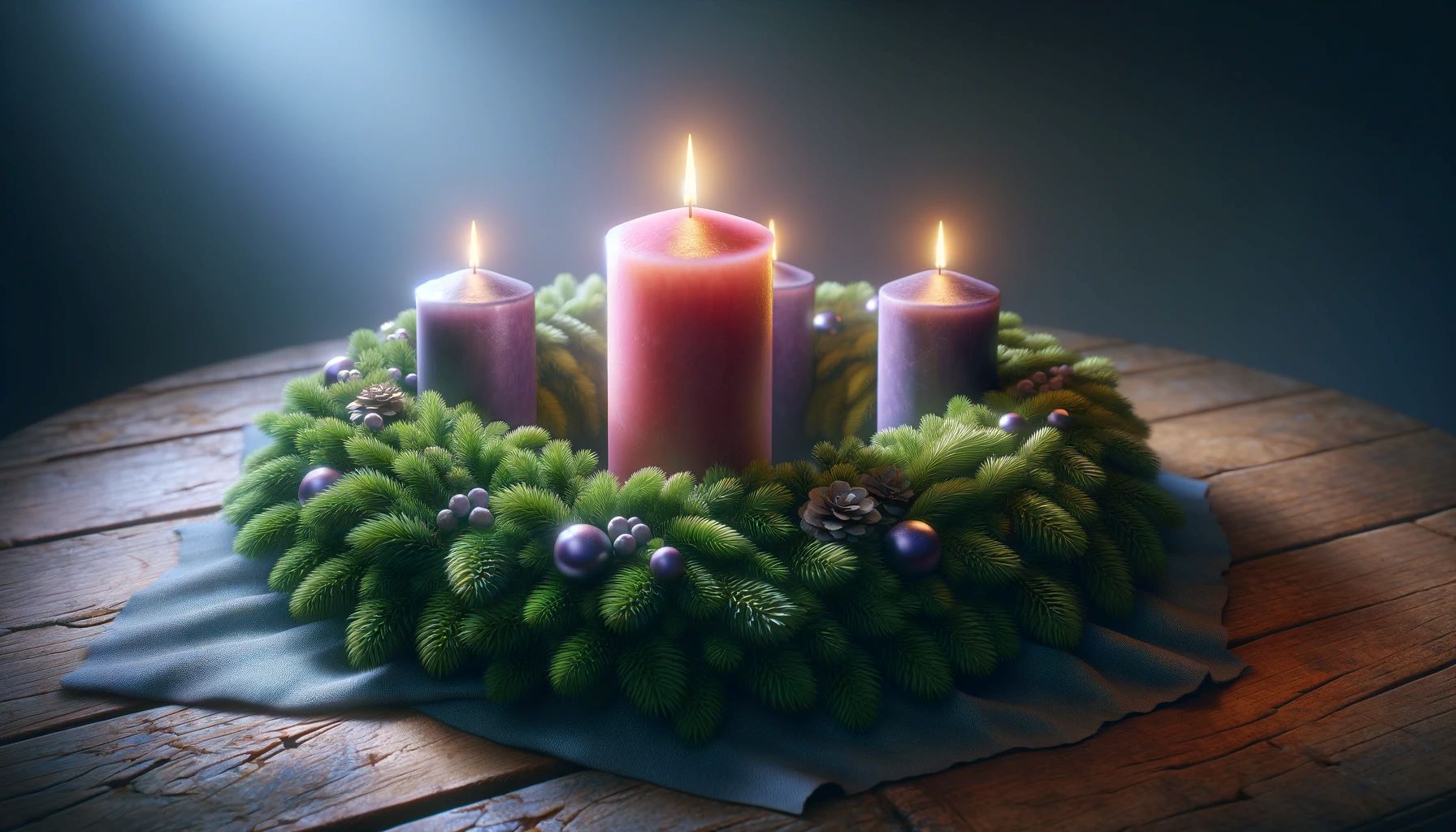Home>Special Themes>What Does The Purple Of Advent Mean


Special Themes
What Does The Purple Of Advent Mean
Published: February 14, 2024
Ericka Andersen, an editor at Christian.net, expertly merges digital strategy with content creation, focusing on faith and societal issues. Her communication skills enhance the platform's engaging narratives, fostering meaningful dialogue on belief's impact on society.
Discover the significance of the color purple in Advent and its special themes. Uncover the deeper meaning behind this symbolic color.
(Many of the links in this article redirect to a specific reviewed product. Your purchase of these products through affiliate links helps to generate commission for Christian.net, at no extra cost. Learn more)
Table of Contents
Introduction
Advent, a time of anticipation and preparation for the celebration of the birth of Jesus Christ, is a significant period in the Christian calendar. It encompasses the four Sundays leading up to Christmas and is a time of reflection, hope, and spiritual growth. One of the most striking visual elements of Advent is the prominent use of the color purple. The rich and deep hue of purple holds profound symbolism and meaning within the context of Advent, serving as a visual reminder of the spiritual significance of this season.
Throughout the centuries, the color purple has been associated with royalty, nobility, and penitence. In the context of Advent, it serves as a powerful symbol of both the majesty of Christ and the solemnity of the preparatory period leading up to His birth. The use of purple during Advent creates a sense of reverence and solemnity, inviting individuals to engage in introspection and spiritual contemplation as they prepare their hearts and minds for the celebration of Christmas.
As we delve into the symbolism, historical and religious significance, as well as the spiritual meaning of the color purple in the context of Advent, we will uncover the profound depth of meaning encapsulated within this rich and regal hue. Additionally, we will explore the ways in which purple is incorporated into Advent decorations, further enhancing the visual and spiritual experience of this sacred season. Join us on this enlightening journey as we unravel the significance of purple in the context of Advent, gaining a deeper understanding of the spiritual tapestry woven through this period of joyful anticipation and profound reflection.
The Symbolism of Purple in Advent
The color purple holds profound symbolism within the context of Advent, serving as a visual representation of the spiritual significance of this sacred season. In the Christian tradition, purple is deeply symbolic, representing penitence, preparation, and royalty. As the first candle of the Advent wreath is lit, the deep purple hue emanates a sense of solemnity and reverence, setting the tone for the introspective journey that lies ahead.
Purple, historically associated with royalty and nobility, conveys a sense of majesty and grandeur. In the context of Advent, this symbolism extends to the anticipation of the arrival of the King of Kings, Jesus Christ. The use of purple serves as a powerful visual reminder of the regal nature of Christ's birth and the reverence with which His coming is awaited.
Furthermore, purple embodies the spirit of penitence and preparation. As individuals embark on the Advent journey, the color serves as a call to introspection and spiritual contemplation. It encourages believers to engage in self-reflection, seeking inner purification and renewal as they prepare to celebrate the birth of Christ. The solemn and contemplative nature of purple fosters an atmosphere of spiritual readiness, inviting individuals to embrace the transformative power of this season.
Moreover, purple symbolizes the duality of Advent – the intertwining of solemn reflection and joyful anticipation. It encapsulates the tension between the penitential aspects of the season and the exuberant anticipation of the coming celebration. This duality is reflected in the multifaceted nature of the color purple, which evokes both a sense of solemnity and a glimmer of anticipation, mirroring the complex emotions that characterize the Advent season.
In essence, the symbolism of purple in Advent is multifaceted and profound. It serves as a visual representation of the spiritual journey that unfolds during this sacred season, encompassing themes of royalty, penitence, anticipation, and introspection. As the color adorns churches, decorations, and liturgical vestments, it weaves a rich tapestry of meaning, inviting individuals to immerse themselves in the depth and significance of the Advent experience.
Historical and Religious Significance
The historical and religious significance of the color purple in the context of Advent can be traced back to ancient traditions and religious symbolism. Throughout history, purple has been revered as a color of great significance, embodying both regal splendor and spiritual depth. In the context of Christianity, the use of purple holds profound historical and religious roots, deeply intertwined with the narrative of the birth of Jesus Christ and the traditions surrounding the Advent season.
Historically, the color purple was a symbol of wealth, luxury, and royalty. In ancient civilizations, such as the Roman Empire, the production of purple dye was a laborious and expensive process, making it a coveted symbol of status and power. The rich and vibrant hue of purple was reserved for the elite, including emperors, nobles, and high-ranking officials, signifying their elevated status within society. This historical association with royalty and prestige laid the foundation for the symbolic significance of purple within the Christian tradition.
Within the religious context, the color purple carries deep spiritual connotations, particularly during the season of Advent. In the liturgical calendar of the Western Christian Church, purple is prominently featured during the seasons of Advent and Lent, signifying periods of preparation, penitence, and reflection. The use of purple vestments, decorations, and liturgical elements during Advent serves as a visual representation of the solemn and anticipatory nature of this sacred season.
Furthermore, the religious significance of purple in Advent is intricately linked to the narrative of the birth of Christ. As believers prepare to celebrate the incarnation of Jesus, the color purple serves as a poignant reminder of the majesty and divinity of the newborn King. It symbolizes the royal lineage of Christ, harkening back to the prophecies of the Messiah as the King of Kings. The use of purple during Advent encapsulates the reverence and awe surrounding the miraculous birth of Jesus, inviting individuals to contemplate the profound significance of this pivotal moment in history.
In essence, the historical and religious significance of the color purple in Advent is deeply rooted in centuries-old traditions, symbolizing both earthly grandeur and spiritual depth. Its historical association with royalty and its profound religious symbolism converge to create a rich tapestry of meaning, infusing the Advent season with a sense of regal anticipation and spiritual contemplation. As the color purple adorns churches and sacred spaces, it serves as a tangible link to the historical and religious heritage of the Christian faith, inviting believers to partake in the timeless traditions and profound symbolism of this sacred season.
The Use of Purple in Advent Decorations
The incorporation of purple in Advent decorations plays a pivotal role in setting the tone and ambiance of the season. From the adornment of churches and sacred spaces to the creation of personal Advent displays, the presence of purple serves as a visual and symbolic anchor, infusing the surroundings with a sense of reverence, anticipation, and spiritual depth.
Advent wreaths, a hallmark of the season, prominently feature the color purple. The circular arrangement of evergreen foliage, adorned with candles, symbolizes the eternal nature of God's love and the anticipation of the coming of Christ. The use of purple candles within the Advent wreath holds profound significance, with three of the four candles being purple, and one being rose. The purple candles, often lit on the first, second, and fourth Sundays of Advent, embody the themes of hope, preparation, and penitence, guiding individuals through the spiritual journey of the season.
In addition to the Advent wreath, churches and religious spaces are adorned with purple liturgical vestments, banners, and decorations. The rich and regal hue of purple drapes the sacred spaces, creating an atmosphere of solemnity and spiritual contemplation. The visual impact of purple within these settings serves as a poignant reminder of the significance of the Advent season, inviting worshippers to engage in introspection and preparation as they await the celebration of Christmas.
Moreover, the use of purple extends to personal Advent traditions and decorations. From purple candles and ribbons to the incorporation of purple elements in home decor, individuals embrace the symbolic power of the color to create meaningful and reflective Advent displays. The presence of purple within personal Advent decorations serves as a tangible expression of the spiritual journey undertaken during this season, fostering an environment of reverence and joyful anticipation within homes and communities.
The use of purple in Advent decorations transcends mere aesthetics, serving as a powerful conduit for spiritual reflection and anticipation. Its presence within the visual tapestry of Advent creates a seamless integration of symbolism and tradition, inviting individuals to immerse themselves in the profound depth of meaning encapsulated within the color purple. As Advent unfolds, the visual impact of purple decorations serves as a constant reminder of the regal anticipation and spiritual significance of the season, enriching the collective experience of joyful expectation and spiritual preparation.
The Spiritual Meaning of Purple in Advent
The spiritual meaning of the color purple in the context of Advent transcends mere visual symbolism, delving into the profound depths of spiritual contemplation, anticipation, and transformation. As the rich and regal hue of purple adorns churches, decorations, and liturgical elements during the Advent season, it serves as a poignant reminder of the spiritual journey that unfolds during this sacred time.
Purple, historically associated with penitence and preparation, embodies the spirit of introspection and spiritual readiness. It beckons believers to embark on a journey of self-reflection, seeking inner purification and renewal as they prepare to celebrate the birth of Christ. The solemn and contemplative nature of purple fosters an atmosphere of spiritual introspection, inviting individuals to embrace the transformative power of this season.
Furthermore, the spiritual meaning of purple in Advent is intricately linked to the themes of royalty and anticipation. As believers await the celebration of the birth of Jesus, the color purple serves as a visual representation of the regal anticipation of the arrival of the King of Kings. It symbolizes the majesty and grandeur of Christ's birth, inviting individuals to approach this joyous occasion with reverence and awe.
Moreover, purple embodies the duality of Advent – the intertwining of solemn reflection and joyful anticipation. It encapsulates the tension between the penitential aspects of the season and the exuberant anticipation of the coming celebration. This duality is reflected in the multifaceted nature of the color purple, which evokes both a sense of solemnity and a glimmer of anticipation, mirroring the complex emotions that characterize the Advent season.
In essence, the spiritual meaning of purple in Advent encompasses themes of penitence, preparation, royalty, and anticipation. It serves as a visual and symbolic anchor, guiding believers through a transformative journey of spiritual introspection and joyful anticipation. As the color purple permeates the spiritual tapestry of Advent, it invites individuals to immerse themselves in the profound depth of meaning encapsulated within this rich and regal hue, fostering a sense of spiritual growth, anticipation, and reverence as the celebration of Christmas draws near.
Read more: What Do The Purple Candles Mean In Advent
Conclusion
In conclusion, the color purple holds profound significance within the context of Advent, serving as a visual and symbolic anchor that enriches the spiritual tapestry of this sacred season. From its historical association with royalty and nobility to its deep religious symbolism, purple embodies themes of penitence, preparation, and regal anticipation, weaving a rich narrative of spiritual depth and reverence.
As Advent unfolds, the presence of purple within churches, decorations, and liturgical elements creates an atmosphere of solemnity and joyful anticipation, inviting believers to engage in introspection and spiritual contemplation. The use of purple in Advent decorations, including the iconic Advent wreath, serves as a tangible expression of the spiritual journey undertaken during this season, fostering an environment of reverence and joyful anticipation within homes and communities.
Moreover, the spiritual meaning of purple in Advent transcends mere visual symbolism, delving into the profound depths of spiritual contemplation, anticipation, and transformation. It beckons believers to embark on a journey of self-reflection, seeking inner purification and renewal as they prepare to celebrate the birth of Christ. The duality of purple – embodying both solemn reflection and joyful anticipation – mirrors the complex emotions that characterize the Advent season, inviting individuals to embrace the transformative power of this sacred time.
As we immerse ourselves in the symbolism, historical and religious significance, and spiritual meaning of purple in Advent, we gain a deeper understanding of the profound depth of meaning encapsulated within this rich and regal hue. It serves as a visual representation of the spiritual journey that unfolds during this sacred season, encompassing themes of royalty, penitence, anticipation, and introspection.
In essence, the color purple in Advent serves as a poignant reminder of the regal anticipation and spiritual significance of the season, enriching the collective experience of joyful expectation and spiritual preparation. As we journey through Advent, may the rich symbolism of purple inspire us to embrace the transformative power of this season, fostering a sense of spiritual growth, anticipation, and reverence as the celebration of Christmas draws near.

